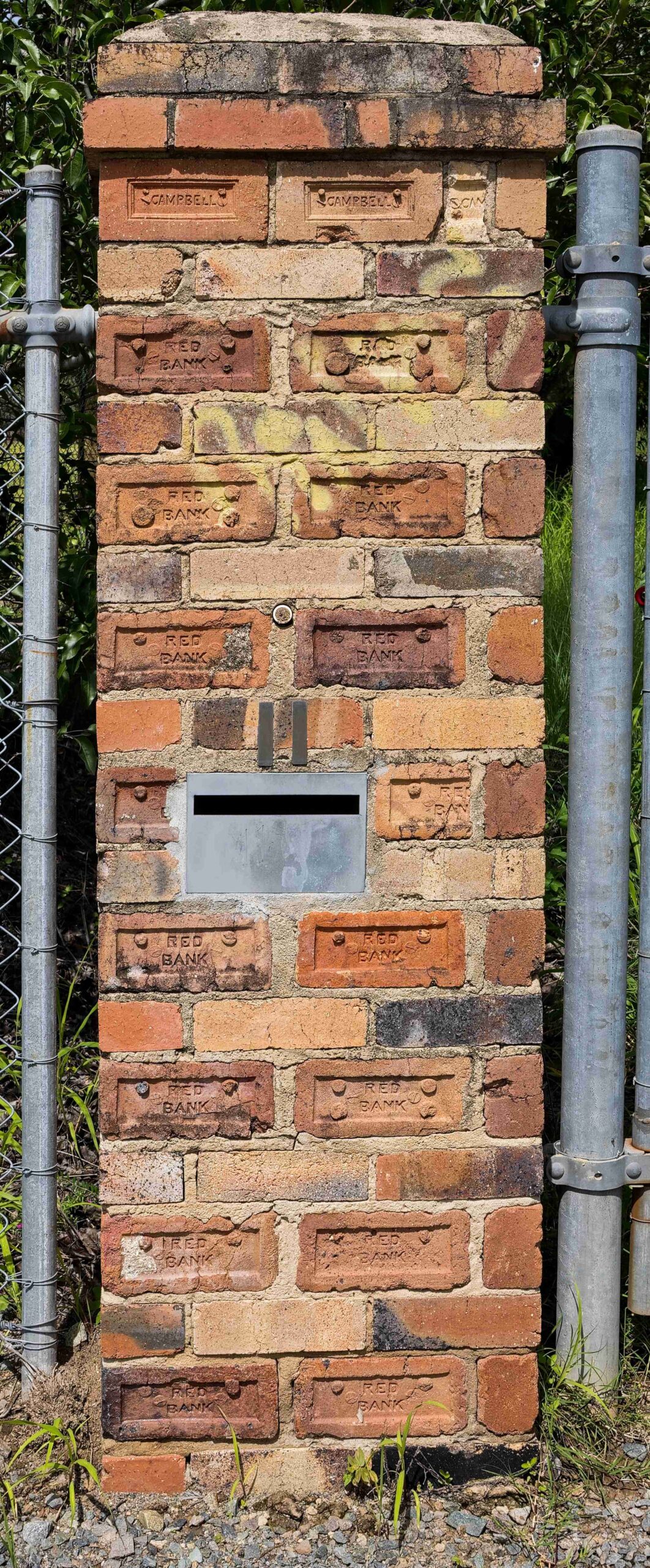Campbells Redbank
Aka: Redbank Brick & Tile Co., Forsyth’s Brick Yards, Campbell & Sons.
History
“In the early 1850’s, James Campbell, a Scotsman, chose Redbank to build a village and start appropriate industries. He chartered a ship, loaded it with timber, machinery, implements and other items necessary to commence his venture.
The Redbank settlement comprised brick-works, saw-mill, stores, several cottages, a school and a church, where different denominations worshipped. The clergy came from Ipswich when available.
Campbell later entered into partnership with Mr Robert Towns, a noted pioneer.
Source: Unknown
TIME LINE
1886: Construction of the brick yard and railway siding leading to it by John Forsyth and Gilbert Wilson.
By 1895: Taken over by J.Campbell & Sons.
1903: Brick complex and siding dismantled; and machinery relocated to Albion.



Description: Red brick.
Condition: Edges crumbled
Type: House Brick.
Frog: Shallow, rectangular frog with inscription.
Inscription: “RED” “BANK” (indented). Two screw marks and two raised nobs within frog.
Origin: Unknown.
Current Location: Ipswich Historical Society.

Description: Light-coloured, discoloured brick.
Condition: Some crumbling of edges.
Type: Kiln Brick?
Frog: Narrow, flat frog with inscription one side only.
Inscription: “CAMPBELL” (indented).
Origin: Rubbish pile, Dinmore Pottery site.
Current Location: My Collection.

Description: Light-coloured brick with tiny impurities.
Condition: Many fissures and some crumbling.
Type: Kiln Brick?
Frog: Shallow, narrow frog with inscription; one side only.
Inscription: “CAMPBELL” (indented).
Origin: Unknown.
Current Location: My Collection.

Description: Grey, blackened brick. Smooth texture.
Condition: Many cracks and fissures. Corner missing.
Type: Kiln Brick?
Frog: Shallow, flat frog with angular sides.
Inscription: “CAMPBELL” (fine, raised lettering). Two raised nobs within frog.
Origin: Abermain Coke Ovens site.
Current Location: My Collection.

Description: Orange brick.
Condition: Fully intact.
Type: House Brick.
Frog: Narrow, shallow, flat frog with inscription. Frog lined with double ridges. Indented circles outside frog both ends.
Inscription: “CAMPBELL” (indented). Two screw marks and two raised nobs within frog.
Origin: Incorporated into gate posts for former Milner Pottery.
Current Location: As above.

Description: Light-brown brick. Many black blotches
Condition: Some crumbling and fissures.
Type: House Brick.
Frog: Shallow, elliptical frog with inscription.
Inscription: “CAMPBELL” “REDBANK” (indented and curved). Two screw marks in middle and raised nobs within frog. Two indented circles outside frog each end.
Origin: Procured via auction in Brisbane.
Current Location: My Collection.



